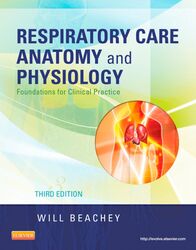「重要なお知らせ:日本語書籍をご購入いただき、eLibraryをご利用の皆さまへ」
エルゼビアは、より快適にサービスをご利用いただくため、システムの重要なアップデートを実施いたします。
現在、新サイト、eBooks+への移行が進められています。
新規ユーザー登録および書籍の登録はElsevier eLibraryでは停止しております。
12月15日以降に
こちらよりご利用・ご登録ください。
Respiratory Care Anatomy and Physiology






Book Description
Perfect for both practicing therapists and students in respiratory therapy and associated professions, this well-organized text offers the most clinically relevant and up-to-date information on respiratory applied anatomy and physiology. Content spans the areas of basic anatomy and physiology of the pulmonary, cardiovascular, and renal systems, and details the physiological principles underlying common therapeutic, diagnostic, and monitoring therapies and procedures. Using a clear and easy-to-understand format, this text helps you take a more clinical perspective and learn to think more critically about the subject matter.
- Open-ended concept questions require reasoned responses based on thorough comprehension of the text, fostering critical thinking and discussion.
- Clinical Focus boxes throughout the text place key subject matter in a clinical context to connect theory with practice.
- Chapter outlines, chapter objectives, key terms, and a bulleted chapter summary highlight important concepts and make content more accessible.
- Appendixes contain helpful tables and definitions of terms and symbols.
- NEW! Chapter on the physiological basis for treating sleep-disordered breathing clarifies the physiological mechanisms of sleep-disordered breathing and the various techniques required to treat this type of disorder.
- NEW! Reorganization of content places the section on the renal system before the section on integrated responses in exercise and aging to create a more logical flow of content.
- NEW! More Clinical Focus scenarios and concept questions provide additional opportunities to build upon content previously learned and to apply new information in the text.


 (0 rating)
(0 rating)